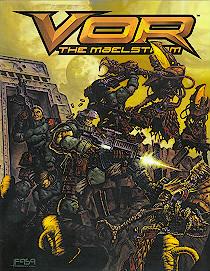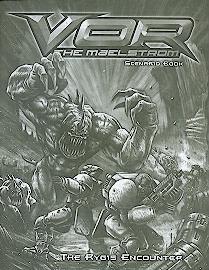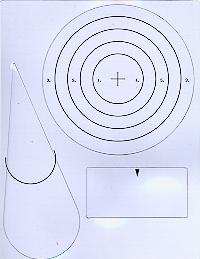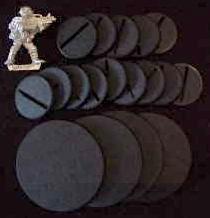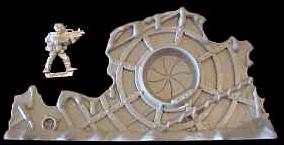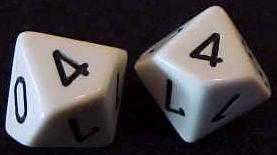
VOR the Maelstrom
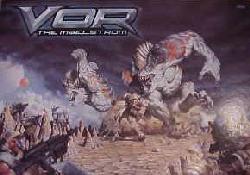
Back to SCIENCE FICTION LAND COMBAT RULES
Fast-paced tactical science-fiction combat game, between survivors of worlds absorbed by the cosmic Maelstrom. Boxed set includes rules, terrain pieces, and figures for two factions (North American Union and Growler). The background also covers several additional armies: Neo-Soviet Empire, Zykhee (8-foot-tall humanoids), the Shard (nanite crylstaloids), Pharon (dead race), Mashers (barbarians), Golems (machine-like symbiotes), and the Ceru (blue dwarves). Union, Growler, Neo-Soviet and Zykhee army lists are provided. In addition, rules allow players to devise stats for any figures they desire to use, and to design their own armies/forces.
Turn starts with players rolling for initiative; the winner can activate one of his units, or select an enemy unit which his opponent must activate. Play proceeds with players alternately activating their units. When a model is activated, it may spend its Move Points in order to accomplish Actions (such as moving, shooting, or holding/waiting, with different Actions having different point costs). The rules also cover vehicles, scenarios, campaigns, and the strange terrain found within the Maelstrom.
| Period | the Maelstrom, a cosmic vortex which swallows worlds | ||||||||
|---|---|---|---|---|---|---|---|---|---|
| Scale |
| ||||||||
| Basing | Individual. | ||||||||
| Contents | Boxed set contains:
| ||||||||
| Designer | Mike "Skuzzy" Nielsen (theskuzz@sprynet.com) | ||||||||
| Publisher | First edition published 1999 by FASA. |
